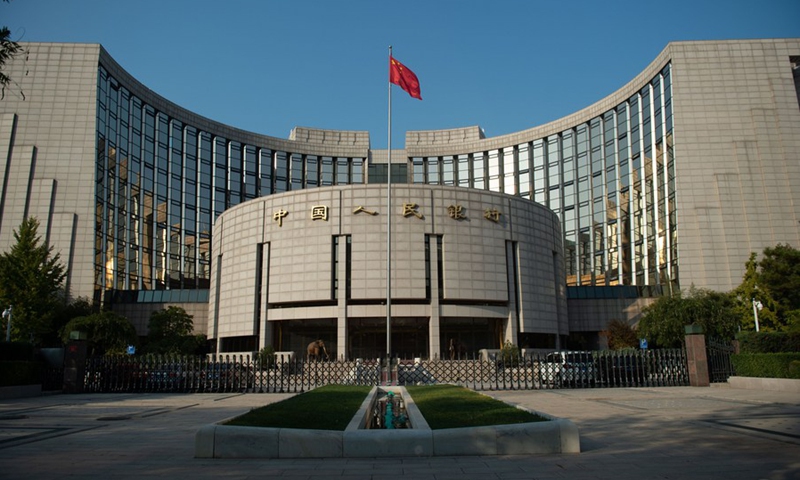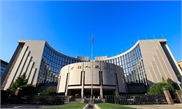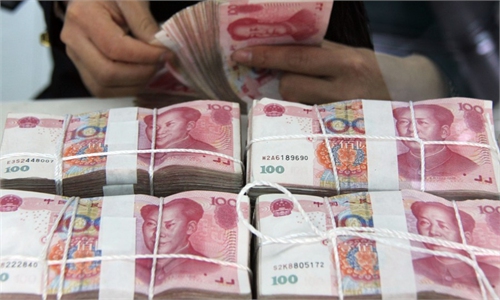China’s central bank conducts net fund injections via MLF loans for 15th straight month

Photo shows an exterior view of the People's Bank of China in Beijing. Photo: Xinhua
China's central bank on Sunday announced its first medium-term lending facility (MLF) operation in the Year of the Dragon, continuing a streak of 15 consecutive months of net fund injections through MLF loans to maintain reasonable and ample liquidity in the banking system.
A total of 500 billion yuan ($69.51 billion) was injected into the market via the MLF facility, which will mature in one year at an interest rate of 2.5 percent, unchanged from the previous operation, the People's Bank of China (PBC) announced.
Given that 499 billion yuan worth of MLF loans are due to mature in February, it means a net injection of 1 billion yuan into the market; and net fund injections via MLF loans have been carried out for 15 straight months, according to media reports.
The MLF tool was introduced in 2014 to help commercial and policy banks maintain liquidity by allowing them to borrow from the central bank using securities as collateral.
Analysts noted that the central bank's operation met market expectations, helping to increase medium- to long-term liquidity in the banking system and support credit growth as well as government and corporate bond issuance. It is seen as a signal of continued efforts to implement pro-growth policies.
Meanwhile, the nation's benchmark loan prime rate (LPR) is still likely to be lowered independently, even though it is usually based on the PBC's open market operations, especially the MLF rate, analysts said on Sunday.
In January, China's one-year LPR, which serves as the basis for most new and outstanding loans, was 3.45 percent. Meanwhile, the over five-year rate, which many lenders use to determine mortgage rates, stood at 4.2 percent.
"The previous reserve requirement ratio (RRR) cut and reductions in deposit rates [by commercial banks] have set the stage for lowering the LPR, and a decrease in the LPR will help reduce financing costs for the real economy and support a stable economic recovery," Ming Ming, chief economist at CITIC Securities, told the Global Times on Sunday.
It may be advisable to further downplay the relationship between LPR and MLF rates, Ming said, adding that they represent different interest rate systems, with the LPR representing the loan rate for the real economy and the MLF representing the financing rate for the financial market. The adjustment pace of the MLF rate has not been entirely consistent with that of the LPR.
The potential for an LPR reduction hinges on the possibility of lowering bank funding costs, with deposit costs being a key factor. Major banks have lowered deposit rates four times since 2022, which could further facilitate LPR reductions and enable banks to pass on the benefits to entities, Ming noted.
An LPR reduction is possible, mainly because the economic recovery still requires financial support. This will help lower consumption and investment costs, stimulating the vitality of microeconomic entities and boosting effective demand, Zhou Maohua, a macroeconomic analyst at Everbright Bank, told the Global Times on Sunday.
In particular, there is a higher possibility for the reduction of the over five-year LPR rate, which is expected to further reduce consumers' interest expenses on mortgages and promote the stable operation of the real estate market, according to Zhou.
Central bank Governor Pan Gongsheng said in a press conference in January that domestic banks have already moderately reduced deposit rates, and the PBC was planning to cut the RRR and lower the interest rate of rediscounting for loans to the agricultural sector and small enterprises. It could help to push the LPR lower.



